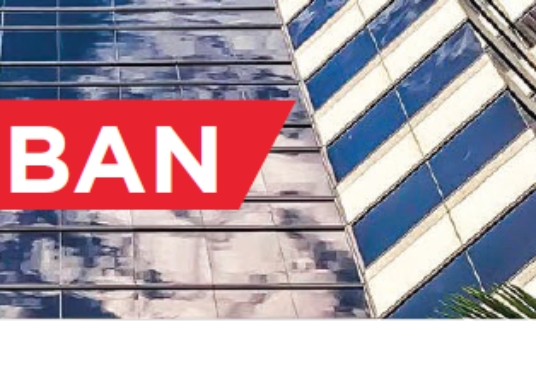Steady as She Goes, U.S. Office Markets in Q2 2018
U.S. office markets posted another solid performance in the second quarter of 2018 with steady leasing volumes, healthy absorption, and rising asking rents. New construction remained robust during the quarter: a total of 18.0 million square feet (msf) of office space was delivered to the market—the most in nearly a decade. The new construction helped push the national office vacancy rate upward, from 13.3% in the first quarter of 2018 to 13.4% in the second quarter.
Demand remains healthy: The U.S. economy gained momentum in the second quarter as employment growth accelerated. Office-using industries (financial, professional and business services, and information) gained 183,000 jobs in the second quarter of 2018, an increase from the 166,000 job gains in the first quarter of the year. This pick-up in employment led to higher absorption. Office absorption increased from 7.5 million msf the first quarter to 12.9 msf in the second quarter.
Leasing is right at long-term averages: After totaling 72.6 msf in the first quarter of 2018, new leasing volume dipped slightly to 72.0 msf in the second quarter. The total 144.6 msf of new leasing volume in the first half of the year was, however, right in line with the 140 msf average in the first-half of the previous five years. As they have through much of the current cycle, the technology and financial services sectors dominated leasing activity. Tech leasing captured approximately 20% of major leases, while financial services accounted for just less than 15%. One sector that experienced a pick-up in leasing volume was legal services which accounted for 5.9% of major leases in the second quarter, an increase from 3.5% in the first quarter.
The tech-dominated West region once again registered the strongest leasing volume and absorption. New leasing volume totaled 27.3 msf in the region—38% of all leasing even though the region has 27.7% of national inventory. Roughly 4.2 msf of space was absorbed in the West; the top two markets nationwide in terms of absorption were located in the region—San Francisco with 1.3 msf and Denver with 1.1 msf.
Construction deliveries rise, but so does the pipeline: A total of 18.0 msf of new office space was delivered in the second quarter of 2018, an increase from 10.8 msf in the first quarter and the largest volume of newly delivered space in since the fourth quarter of 2008. Despite the acceleration in completions, the current pipeline of office space under construction expanded from 105.0 msf at the end of the first quarter of 2018 to 107.1 msf at the end of the second quarter; roughly 20 msf of new construction was started during the second quarter. Cushman & Wakefield estimates that total completions for all of 2018 will reach 71 msf—the largest volume of completions since 2008. In the second quarter of 2018 a total of 22 markets reported a new construction pipeline of 2.0 msf or more, the largest number of markets with more than 2.0 msf that Cushman & Wakefield has ever recorded.
High-growth markets continue to attract much of the new development. The 10 markets with the largest new construction pipelines accounted for 50.2 msf—or 46.9%— of the national construction pipeline. Over the past two years, employment in office-using industries in these 10 markets grew 4.9%, compared with a 3.8% increase for the U.S. as a whole. This suggests that the new construction can be absorbed.
Approximately 29.6 msf of the construction pipeline is build-to-suit, with the remaining 77.6 msf speculative and approximately 23 msf of that speculative construction pre-leased. The pipeline of available new space is approximately 54.4 msf. The existing space that tenants are vacating will also have an impact on the market. But with job growth strong in 2018, some of that new space will be taken by tenants that are expanding; consequently the impact on market vacancy and rents will be more modest than what the total construction numbers suggest.
Even though absorption increased during the second quarter of 2018, the increase was smaller than the amount of office space completed. As a result, the national vacancy rate increased slightly—from 13.3% in the first quarter to 13.4% in the second. There was variation across markets. Vacancy rates declined from the previous quarter in 43 markets and increased in 36 markets.(Vacancy rates in the rest of the markets tracked by Cushman & Wakefield were unchanged).
The major markets with the lowest vacancy rates were largely tech-driven ones. Three major markets with the lowest vacancy rates in the nation were Midtown South Manhattan (6.7%), San Francisco (7.4%) and Raleigh-Durham (7.6%), all of which are important technology hubs.
Rents increase: After declining slightly in the first quarter of 2018, the national weighted average asking rent increased 1.0% in the second quarter to $30.94 per square foot (psf), a record high. Rents increased in 55 of the 87 markets tracked by Cushman & Wakefield during the second quarter while only 24 markets registered declines. Rents in eight markets were unchanged quarter-to-quarter. On a year-over-year basis, the national average asking rent rose 2.0%. Markets that saw large rent increases from a year ago include Orange County CA (+16.2%), Brooklyn, NY (+11.3%), Atlanta, GA (+10.1%), Charlotte ,NC (+8.5%) and Oakland/East Bay, CA (+8.1%).
The highest rents in the nation remain concentrated in the New York and San Francisco metro areas. The top five rental markets were the three in Manhattan—Midtown ($77.44 psf), Midtown South ($71.07 psf) and Downtown ($62.92psf)—as well as San Francisco ($72.30 psf) and San Mateo County ($58.69 psf).
OUTLOOK:
- Office markets across the U.S. will continue to benefit from the strong economy as more robust job growth drives demand for space.
- Growth will be offset by a rising supply of new buildings. 2018 will see the largest amount of square footage added to the national inventory in a decade.
- Tenants will continue to lease space in new buildings that enable them to increase efficiency and attract talent.
- Job growth will remain at a level sufficient to absorb the new space coming to the market. Look for markets across the nation where rising supply creates opportunities for tenants.






